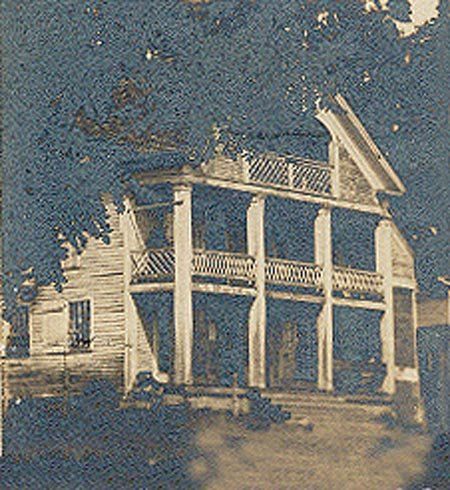Town of Sutton History
Our Town History
The town of Billymead was granted to Jonathan Arnold and associates on February 26, 1782. Named for Arnold’s son, William, it probably meant Billy’s Meadow. People from Lyndon and other nearby towns as well as from New Hampshire settled Billymead. Twelve years later the town was formally organized on Independence Day, July 4, 1794. Citizens chose James Cahoon to be town clerk and John Anthony, Samuel Cahoon, and Samuel Orcutt as the first three selectmen.Unfortunately by 1810 William’s bullying and drunken behavior had made him into an undesirable neighbor and citizens thought the town should disassociate itself from him and find a new name. A resident who had come from Sutton, Massachusetts, suggested “Sutton” and the name was accepted at town meeting. The state recognized the name change in 1812.

Most early inhabitants were farmers and some millers because the favorable water sources provided power for several mills, especially along Calendar Brook. Alden R. Rennie had a shingle mill; George Bean, a carriage factory; and George Whipple had a firkin factory, a place where small covered vessels were made to hold butter. Records show that a woolen and carding mill burned in 1852. William Dinsmore rebuilt a mill on the same site and also made potato starch. Later the mill became Alfred Burnham’s carding mill and a lumber mill as well. He also produced butter tubs and shingles.
There was also Bundy’s grist mill and sawmill which was brought on a hand sled from New Hampshire. Ninety years later it was still in use and owned by Freeman Hyde. Near West Burke, Elmer S. Roundy operated another grist mill originally built by Daniel Beckwith. Roundy also made shingles and sawed lumber there. In later years the U.S. Bobbin Shuttle Mill on Route 5 was a major operation and used a railroad spur that joined the main line.
C. Parker ran a cedar distillery, and Alvin W. Brockway, in the general painting business, had a horse and carriage shop as well. The Orleans and Caledonia Lumber Company operated a steam mill, later owned by Henry F. Pillsbury. Pillsbury’s ten Jersey cows on the farm connected with the mill were pronounced the best in the state.
In the early 1800s, Sutton had the distinction of producing more maple sugar than any other town in Vermont. In 1840, for example, the output was 85,430 pounds.
Stephen Easton opened a hotel on Road 26. In 1887 the directory listed the Sutton Hotel with a Lucius J. Campbell as the proprietor.
The Sutton Grange Hall, also used for Town Meetings, was built in 1917 and burned around 1937. It was rebuilt on the same location and now houses the grange hall and fire department.
Some of the early settlers were Freewill Baptists, and though they worked long hours in their fields and shops, they often met in their homes for fellowship and worship. On one occasion, it is said, so many crowded into a home that the floor gave out and dropped the worshippers into the basement. Some groups met in the log school house near the center of town.
In 1804, a traveling minister, John Quimby, helped organize the Freewill Baptists. John Colby, son of Thomas Colby, a farmer and deacon of the church, had become a preacher and was the first minister. Because of financial difficulties partly due to the War of 1812, people were reluctant to pay for building a church. John Colby sold some of his property and built a church near the village cemetery at his own expense.
After many difficulties other Baptist groups were formed and some confusion resulted. A new church was built in 1832 and Rev. Jonathan Woodman, its first minister, reorganized the church as the General Baptist. Again in 1837, the church was reorganized as the Second Freewill Baptist Church. It flourished and for a time was the largest society of its denomination in the state.
In 1886 there were ten school districts with ten common schools. Of the 192 pupils, five were in private schools. The village school was originally a brick church when there was more than one community congregation. The steeple was removed and now with additions it is the present Sutton School. The building has been used for Town Meetings and also was used for Grange meetings after the Grange Hall burned until it was rebuilt.
The Willoughby State Forest was developed for reforestation by the Civilian Conservation Corps in the 1930s, but being off the beaten path did not get much use. Buildings were ravaged by time and vandalism until all that remained standing was a fireplace or two. Although discontinued as a park, it is maintained by Vermont as a state forest.
Revolutionary War soldiers who came to the area after the war are buried in South Ridge Cemetery. The other cemeteries are North Ridge, East Ridge, and Village.
More recent developments include the Portland Pipe Line Company which maintains an automatic pumping station in Sutton, but the old brick pumping station and houses for their workers on Vermont Route 5 were sold for private use.
Useful Links
Contact info
Fax: 802-467-1052
167 Underpass Road, Sutton, VT 05867
Designed by Northeast Kingdom Online. Powered by NEKO|360.